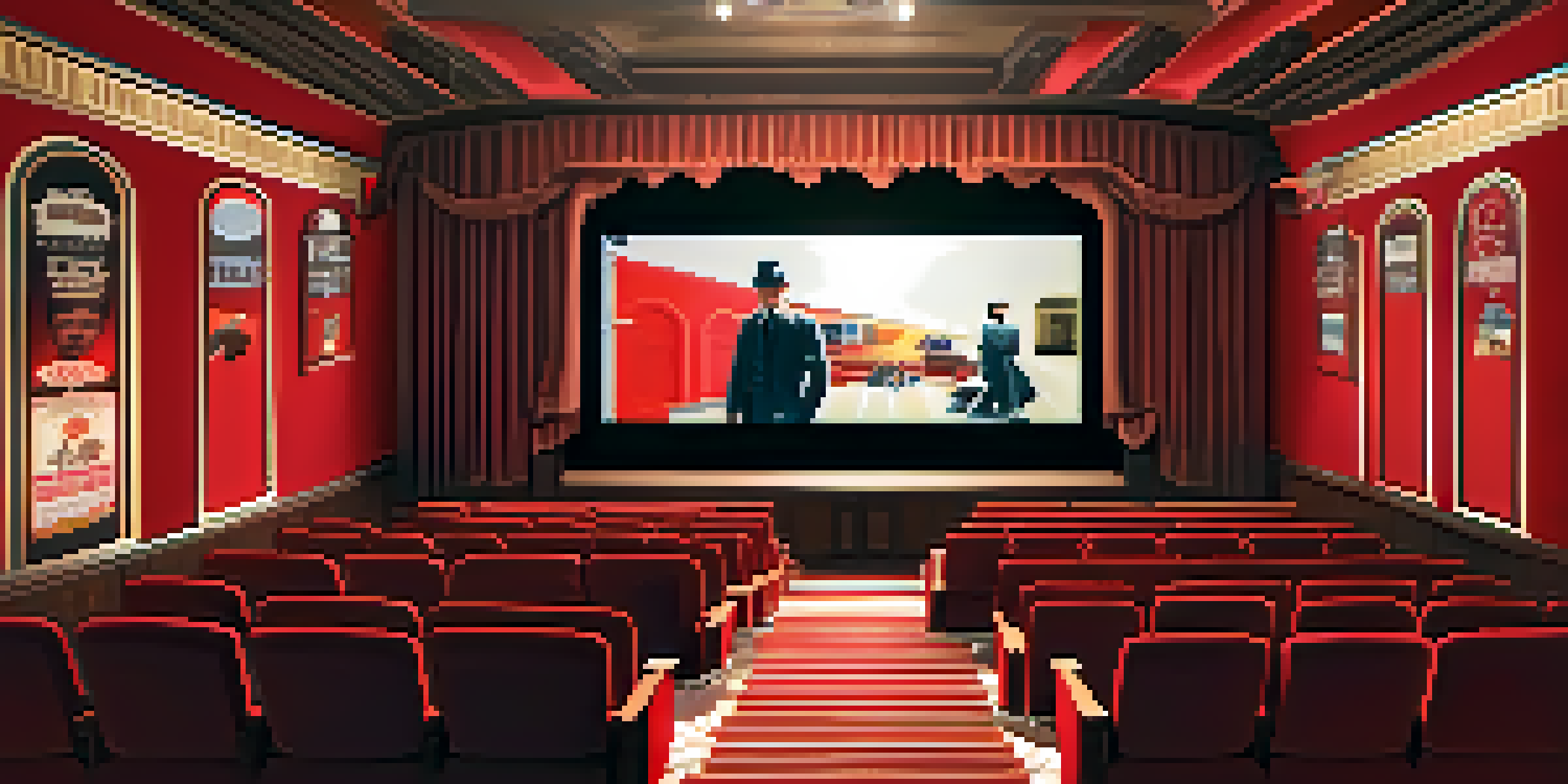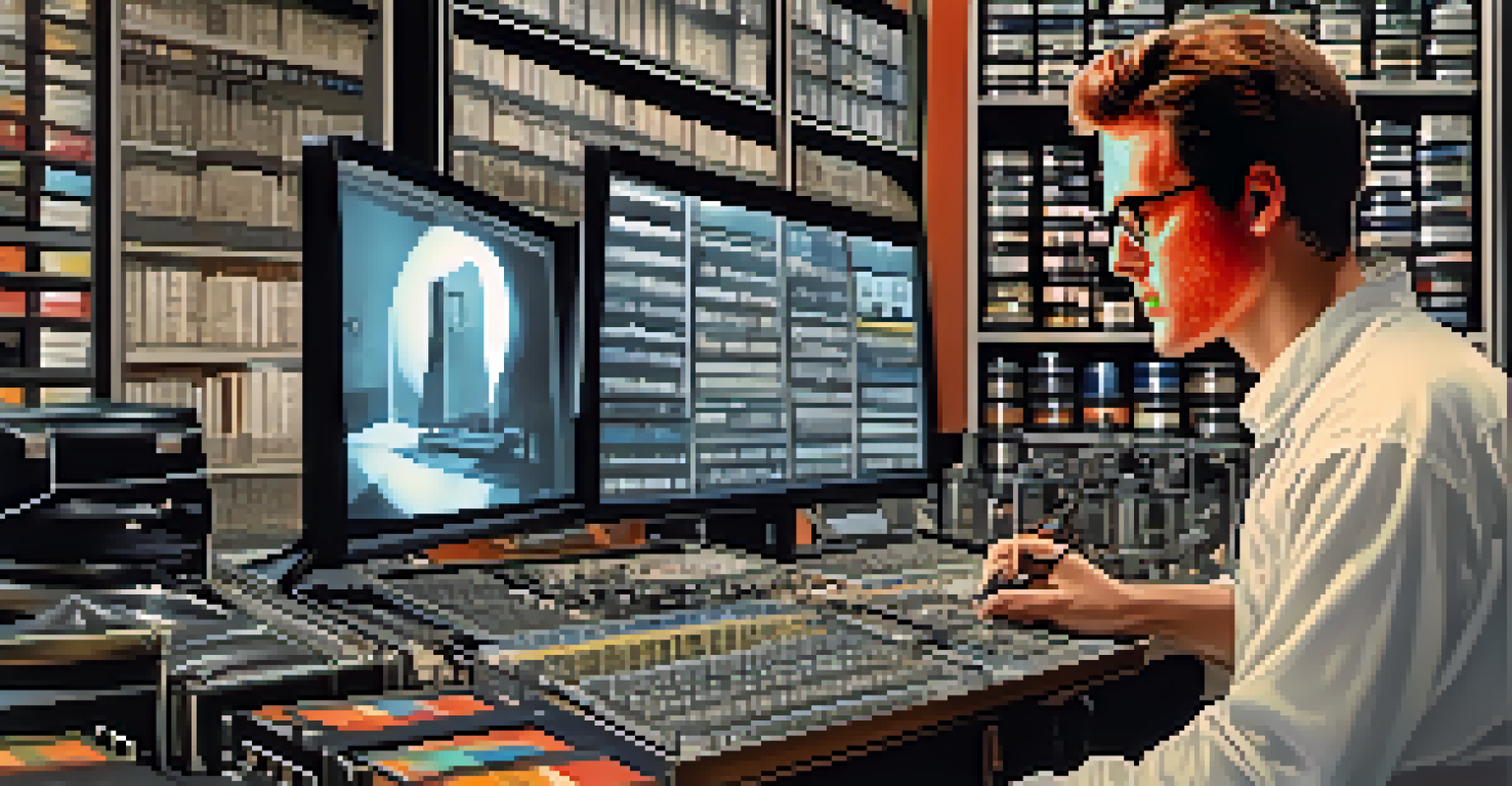The Cultural Significance of Restoring Classic Hollywood Films

Preserving Cinematic Heritage for Future Generations
Restoring classic Hollywood films is crucial for preserving our cinematic heritage. These films are not just entertainment; they reflect the cultural and social values of their time. By restoring these works, we ensure that future generations can experience the stories that shaped film history.
Cinema is a matter of what's in the frame and what's out.
Consider classic movies like 'Casablanca' or 'Gone with the Wind'. Their themes and portrayals of love, sacrifice, and struggle resonate even today. When we restore these films, we are not just fixing scratches and fading colors; we are reviving the emotional and historical context they embody.
In doing so, we allow new audiences to connect with the past, fostering a deeper understanding of our shared cultural landscape. This connection can spark discussions about how far we've come and the progress we still need to make.
Artistry and Technical Innovation in Restoration
Film restoration is an intricate art that combines technical expertise with a passion for cinema. Restorers use advanced technology to repair and enhance the original footage while remaining true to the filmmaker's vision. This process often involves meticulous research to understand the original colors, textures, and sound designs.

For instance, the restoration of 'The Wizard of Oz' brought back its vibrant colors, allowing viewers to experience Kansas and Oz as they were originally intended. This technical innovation not only revives the visual splendor but also highlights the artistry behind these classic films.
Preserving Cultural Heritage
Restoring classic films allows future generations to connect with the cultural and social values of the past.
Moreover, the restoration process often uncovers hidden gems, such as deleted scenes or alternative endings, offering fresh perspectives on beloved stories. This blend of artistry and technical prowess creates an enriching experience for viewers and scholars alike.
Cultural Reflection and Social Commentary
Classic films often serve as mirrors reflecting societal norms and issues of their time. By restoring these films, we gain access to a wealth of cultural commentary that can inform our present. For example, films from the 1940s and 1950s illuminate gender roles and racial dynamics that were prevalent then.
The movies are a great place to tell stories, but they are also a great place to preserve our culture.
Restorations give us the opportunity to engage with these themes critically. They allow audiences to examine how these portrayals influence contemporary perspectives on race, gender, and identity. This engagement can lead to important conversations about progress and the need for ongoing change.
As we revisit these films, we can recognize patterns and shifts in societal attitudes, making the restoration process not just about preservation but also about understanding our cultural evolution.
Strengthening Community and Film Culture
Restoring classic films fosters a sense of community among cinephiles and casual viewers alike. Film screenings of restored classics often draw diverse audiences, creating shared experiences and discussions. This communal aspect is vital for building a vibrant film culture that celebrates its roots.
For example, events like 'The Turner Classic Movies Film Festival' not only showcase restored films but also encourage dialogue about their significance. Such gatherings allow fans to share their love for cinema, bridging generational gaps and promoting a collective appreciation.
Economic Benefits of Restoration
Film restoration not only boosts ticket sales and creates jobs but also enhances tourism through film festivals.
This sense of belonging reinforces the idea that films are a communal experience. By restoring and sharing classic films, we nurture a culture that values storytelling and the connections it fosters.
Economic Impact of Film Restoration Projects
Film restoration is not just a labor of love; it also has significant economic implications. Restoring classic films can lead to increased ticket sales for screenings and home media releases, thereby boosting the film industry. Additionally, it creates jobs for technicians, researchers, and marketing teams involved in the restoration process.
Consider the success of restored versions of classics like 'Jaws' or 'Star Wars'. Their re-releases often generate substantial revenue, proving that audiences are eager to engage with these timeless stories. This economic boost can, in turn, fund future restoration projects, creating a positive cycle.
Moreover, film festivals showcasing restored classics can attract tourism, further benefiting local economies. This intersection of culture and commerce highlights the broader impact of preserving our cinematic heritage.
Accessibility and Inclusivity in Film Restoration
Restoring classic films also addresses issues of accessibility and inclusivity. Many historic films were created without consideration for modern audiences, especially regarding disability access. Restoration projects often include efforts to improve subtitles, audio descriptions, and other features that make films more accessible.
For instance, adding audio descriptions to classic films allows visually impaired viewers to enjoy the storytelling experience. This initiative not only broadens the audience but also fosters inclusivity within the film community.
Inclusivity in Film Access
Efforts to restore classic films often focus on improving accessibility features, ensuring all audiences can enjoy these cultural treasures.
By making these films accessible, we ensure that everyone can engage with our cultural heritage. This commitment to inclusivity reflects a growing awareness of the diverse needs of audiences today.
The Role of Technology in Film Restoration
Advancements in technology have revolutionized the film restoration process. Digital tools allow restorers to clean up footage, enhance sound quality, and even restore color to black-and-white films. This technological support breathes new life into classic films, making them more appealing to contemporary audiences.
For example, the restoration of 'Metropolis' utilized state-of-the-art techniques to not only repair the film but also to bring back lost scenes. Such advancements showcase how technology can bridge the gap between the past and present, making classics relevant again.

However, it's essential to balance technology with authenticity. While digital tools can enhance the viewing experience, restorers must remain faithful to the original vision, ensuring that the essence of the film is preserved.